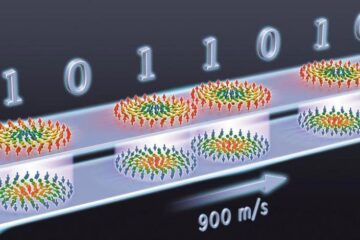Insect Antibiotic Provides New Way to Eliminate Bacteria

The global emergence of multi-drug resistant bacteria is posing a growing threat to human health and medicine. “Despite huge efforts from academic researchers and pharmaceutical companies, it has proven very difficult to identify effective new bacterial targets for antibiotic discovery,” says John A. Robinson from the Department of Chemistry at UZH.
“One of the major challenges is identifying new mechanisms of antibiotic action against dangerous Gram-negative bacteria.” This group of bacteria includes a number of dangerous pathogens, such as Pseudomonas aeruginosa, which causes life-threatening lung infections, and pathogenic Escherichia coli strains.
Elimination of outer protective shield
An interdisciplinary team of chemists and biologists from UZH and ETH Zurich have now uncovered how thanatin – an antibiotic produced naturally by the spined soldier bug Podisus maculiventris – targets Gram-negative bacteria. The insect’s antibiotic prevents the outer membrane of the bacteria from forming – an unprecedented mechanism in an antibiotic.
All Gram-negative bacteria have a double cell membrane, with the outer membrane taking on an important defensive function and helping the bacteria to block the entry of potentially toxic molecules into the cell. The outside of this membrane is made up of a protective layer of complex fat-like substances called lipopolysaccharides (LPS), without which the bacteria could not survive.
Focusing on protein-protein interactions
Using state-of-the-art methods, the Zurich researchers succeeded in proving that thanatin disrupts the transport of LPS molecules to the outer membrane. The transport pathway consists of a super-structure of seven different proteins that assemble to form a bridge from the inner membrane across the periplasmic space to the outer membrane.
LPS molecules cross this bridge to the cell’s surface, where they form part of the structure of the outer membrane. Thanatin is able to block the protein-protein interactions that are needed to form the bridge. As a result, LPS molecules are prevented from reaching their destination and the biogenesis of the entire outer membrane is inhibited – which is fatal for the bacteria.
New potential clinical candidates
“This is an unprecedented mechanism of action for an antibiotic and immediately suggests ways to develop new molecules as antibiotics targeting dangerous pathogens,” explains Robinson. “This finding shows us a way to develop substances that specifically inhibit protein-protein interactions in bacterial cells.”
This new mechanism is already being used by an industry partner – Polyphor AG in Allschwil near Basel – to develop new potential clinical candidates. The company has a proven track record of success in this area and has recently also developed the antibiotic murepavadin in cooperation with UZH.
Murepavadin is currently in phase III clinical tests in patients with life-threatening lung infections caused by Pseudomonas aeruginosa. “Another new antibiotic targeting other Gram-negative pathogens would be a very welcome addition to the new medicines urgently needed for effective antibacterial therapy,” says Robinson.
Prof. John A. Robinson
Department of Chemistry
University of Zurich
Phone: +41 79 438 23 33
E-mail: john.robinson@chem.uzh.ch
Stefan U. Vetterli, Katja Zerbe, Maik Müller, Matthias Urfer, Milon Mondal, Shuang-Yan Wang, Kerstin Moehle, Oliver Zerbe, Alessandra Vitale, Gabriella Pessi, Leo Eberl, Bernd Wollscheid, and John A. Robinson. Science Advances, 2018, 16 November. DOI: 10.1126/sciadv.aau2634
Media Contact
More Information:
http://www.uzh.ch/All latest news from the category: Life Sciences and Chemistry
Articles and reports from the Life Sciences and chemistry area deal with applied and basic research into modern biology, chemistry and human medicine.
Valuable information can be found on a range of life sciences fields including bacteriology, biochemistry, bionics, bioinformatics, biophysics, biotechnology, genetics, geobotany, human biology, marine biology, microbiology, molecular biology, cellular biology, zoology, bioinorganic chemistry, microchemistry and environmental chemistry.
Newest articles

Properties of new materials for microchips
… can now be measured well. Reseachers of Delft University of Technology demonstrated measuring performance properties of ultrathin silicon membranes. Making ever smaller and more powerful chips requires new ultrathin…

Floating solar’s potential
… to support sustainable development by addressing climate, water, and energy goals holistically. A new study published this week in Nature Energy raises the potential for floating solar photovoltaics (FPV)…

Skyrmions move at record speeds
… a step towards the computing of the future. An international research team led by scientists from the CNRS1 has discovered that the magnetic nanobubbles2 known as skyrmions can be…





















